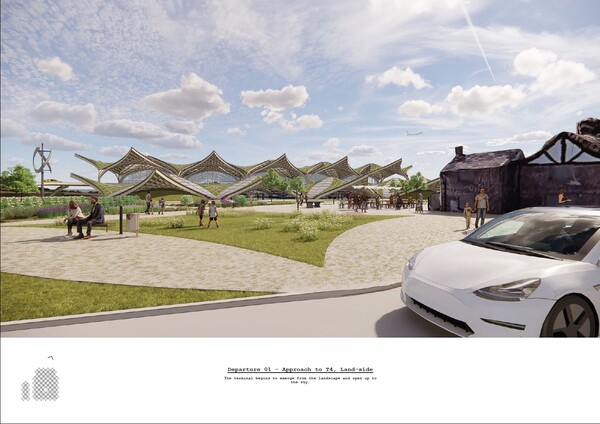Manchester Airport T4
This thesis projects sets out to address the climate emergency in both the construction and aviation industry, two of the largest contributors to CO2 emissions + global warming worldwide. This is realised through a new domestic terminal at Manchester airport and research into both minimal surfaces and timber construction.
The construction of buildings is accountable for 11% of global CO2 emissions. Much of this embodied carbon comes from the buildings superstructure, conventionally made of steel and concrete. This project looks at the application of a hybrid, timber-based solution, research suggests that this could create savings of up to 85% of the buildings embodied carbon. The aviation industry is also responsible for around 5% of global warming, evidence shows that internal flights result in the highest CO2 equivalent emissions per journey. Manchester T4 will facilitate emerging, green technologies in the aviation industry such as hydrogen-powered planes, delta + v wings and even electrically powered ‘air taxis’.
“We think of the Harbour Experience Centre as A MACHINE TO REVEAL THE INCREDIBLE WORLD of the port ” - Winy Maas.
This short sentence reflects the agenda of Atelier Making, through the related terms of ‘MACHINE’, or ‘INSTRUMENT’, and ‘REVELATION’ or ‘EXPERIENCE’. Machines or instruments link to the idea of making through manufacturing or industrial processes, where the outputs of the methods involved can be thought of as vehicles for the advancement of a concept, idea, or experience. As such, this research meticulously investigated numerous timber building technologies, before focusing on the Asymptotic Grid-shell, the vehicle to drive the projects concept. The systems application to the existing site, a threshold between the protected woodlands of Cheshire and the forever expanding tarmac of airport operations, emerges from the landscape of the woodlands. Rising to the sky, imitating the take-off of flight.


